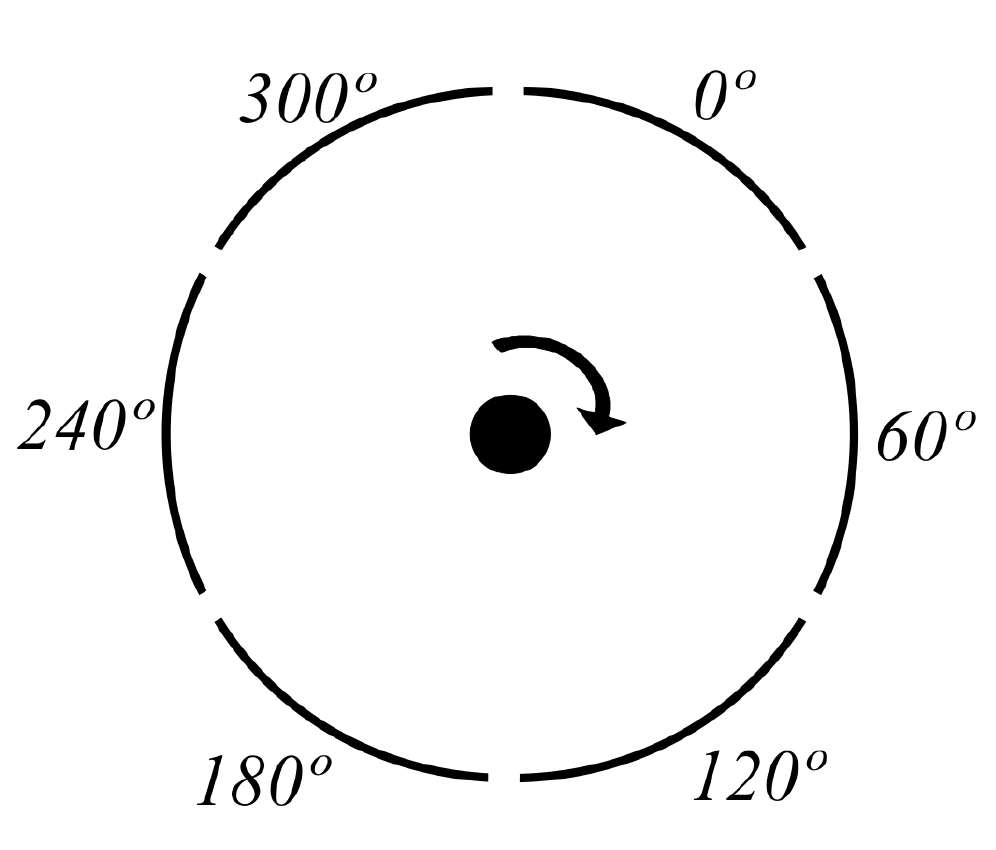The Rotating Wall is a technique used in the ALPHA apparatus that allows us to confine a nonneutral plasma for an arbitrary amount of time and to control the radius, density and rotation frequency of the plasma column.
In principle, a nonneutral plasma (positrons or electrons or antiprotons or ions) confined in a “perfect” Penning-Malmberg trap would be confined indefinitely because the angular momentum is a conserved quantity due to the cylindrical symmetry of the trap. However in reality, there are asymmetric imperfections in the trap which typically arise from small construction errors and misalignments. The imperfections are minimized by appropriate choice of electrode materials, careful construction methods and precise mechanical alignment ‐ however the imperfections always exist to a certain degree and can never be fully eliminated. These imperfections break the intended cylindrical symmetry resulting in a torque on the plasma that causes the plasma column to expand radially. If left unchecked, the radial expansion would eventually cause the plasma to expand all the way to the walls of the trap and we would begin to lose particles. The radial expansion and loss of particles is detrimental to the synthesis of antihydrogen.
Furthermore, the radii of trapped antiproton and positron plasmas are key factors in the formation of trappable antihydrogen. We can counteract the radial expansion and control the radius of the plasma column by applying the rotating-wall technique. Charged plasmas trapped in a Penning-Malmberg trap rotate around the magnetic field axis at a well-defined frequency, which depends on the plasma density. By applying a torque to the plasma we can increase this rotation frequency and therefore increase the density and reduce the radius of the plasma. This torque is applied by a special trap electrode that is azimuthally segmented into six sectors. A sinusoidally varying voltage is applied to each sector with a different phase on each to create an electric field that appears to rotate (hence rotating wall).

Figure 1: A sketch of a six-segment rotating wall electrode used to control plasma radii. The relative phase of the signal applied to each sector of the electrode is labelled.
There are several variants of the Rotating Wall technique depending on the frequency range chosen for the Rotating Wall frequency. The discussion that we have presented above is referred to as the Strong Drive method where the chosen Rotating Wall frequency is near the plasma rotation frequency. A novel variation of the Strong Drive Rotating Wall technique was developed by the ALPHA collaboration where the Strong Drive Rotating Wall is used in conjunction with Evaporative Cooling in a method referred to as Strong Drive Evaporative Cooling (SDR-EVC). SDR-EVC is used for precision control of the plasma density and results in a significant improvement in the shot-to-shot reproducibility of the apparatus and thus an improvement in the antihydrogen trapping rate.
A complication with the use of the Rotating Wall technique is that the application of the Rotating Wall typically increases the temperature of the plasma. Without a sufficient cooling mechanism, the temperature of the plasma will rise too high which reduces our ability to form antihydrogen. Several methods can be used to cool the plasma when the Rotating Wall is applied. The cooling method used depends on the type of particles under consideration. Cyclotron cooling is typically sufficient for keeping electrons and positrons cold when the Rotating Wall is applied. Whereas, laser cooling is used for Beryllium ions and sympathetic cooling must be used for antiprotons.
